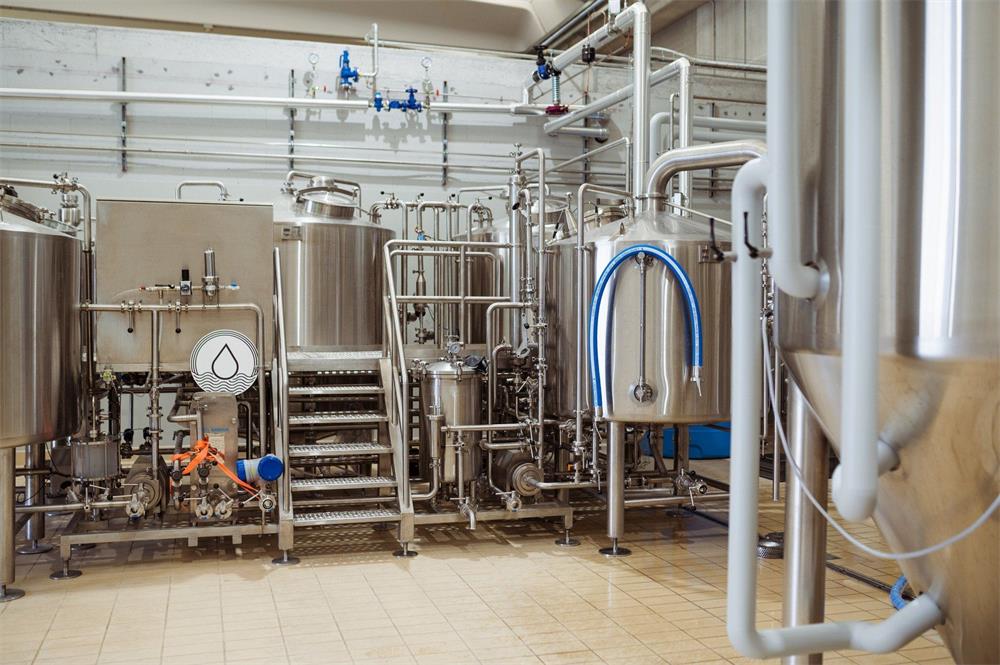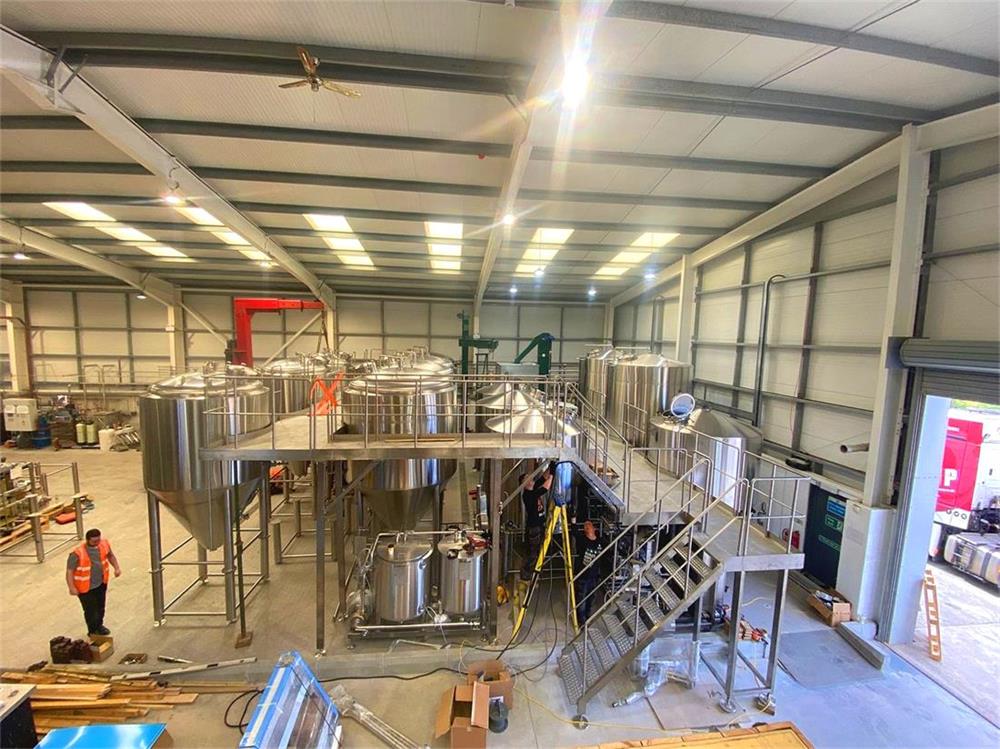The Ultimate Guide to Beer Making Equipment
Overview
So, you’re ready to dive into the world of homebrewing, or maybe you’re looking to upgrade your existing beer-making setup? Great choice! Making your own beer at home is not only fun but also incredibly rewarding. Imagine sipping a cold one, knowing it came straight from your own hands. But before you start, you need the right equipment. From beginners to seasoned brewers, having the right gear is crucial for success. This guide will walk you through everything you need to know about beer making equipment, from the basics to advanced setups, and help you make informed choices along the way.
Key Components
To make beer, you’ll need a variety of equipment, each playing a crucial role in the brewing process. Here’s a breakdown of the essential components:
- Brewing Kettle: This is where it all starts. The brewing kettle is where you’ll boil your wort (the liquid extracted from the mashing process of brewing).
- Fermenter: After boiling, the wort needs to be fermented. This can be done in a fermenter, which can be made of glass, plastic, or stainless steel.
- Airlock: An airlock allows gases to escape during fermentation while keeping contaminants out.
- Hydrometer: This tool measures the specific gravity of the wort, helping you determine the alcohol content.
- Bottling Equipment: You’ll need bottles, caps, and a capping tool to bottle your beer once it’s ready.
- Cleaning Supplies: Cleanliness is paramount in brewing. Make sure you have sanitizers and brushes to keep everything spotless.

Types of Beer Making Equipment
Understanding the different types of equipment and their functionalities is key to selecting the right gear for your brewing needs. Below is a detailed table showcasing various beer-making equipment and their descriptions.
| Equipment Type | Description |
|---|---|
| Brewing Kettle | Large pot used to boil the wort. Sizes vary from 5 gallons to over 20 gallons. Can be made of stainless steel or aluminum. |
| Fermenter | Vessel where wort is fermented into beer. Available in plastic, glass, and stainless steel options. Typically ranges from 5 to 15 gallons in capacity. |
| Airlock | A device that lets fermentation gases escape while keeping contaminants out. Essential for maintaining a clean fermentation process. |
| Hydrometer | Instrument used to measure the specific gravity of the wort, helping to calculate alcohol content. |
| Bottling Equipment | Includes bottles, caps, and capping tool. Bottles can be glass or plastic, with various sizes available. |
| Cleaning Supplies | Sanitizers and brushes needed to keep brewing equipment clean and free from bacteria. |
The Brewing Process
Brewing beer is both an art and a science. Here’s a step-by-step overview of the brewing process:
- Mashing: This involves steeping grains in hot water to extract fermentable sugars.
- Boiling: The wort is boiled to sterilize it and to extract flavors from hops.
- Cooling: The wort is rapidly cooled to a temperature suitable for fermentation.
- Fermentation: Yeast is added to the wort, and it is left to ferment.
- Bottling and Carbonation: After fermentation, the beer is bottled and left to carbonate.
Equipment Capacity, Spaces, Design, and Layout
When planning your homebrewing setup, it’s essential to consider the capacity, space requirements, design, and layout of your equipment. The table below provides a comparative overview.
| Factor | Details |
|---|---|
| Capacity | Brewing kettles and fermenters come in various sizes, from 5 to 20 gallons or more. Choose based on your brewing volume. |
| Spaces | Allocate a dedicated space for brewing, considering ventilation, cleanliness, and ease of access to water and drainage. |
| Design | Equipment design can vary, with options for more compact, space-saving models, or larger, more robust setups for high-volume brewing. |
| Layout | Plan your layout to streamline the brewing process. Ensure easy access to all equipment and consider the flow from mashing to boiling to fermenting and bottling. |
Suppliers and Price Range
Finding the right supplier for your brewing equipment is crucial. Prices can vary widely based on quality, brand, and functionality. Here’s a comparison table for popular suppliers and their price ranges.
| Supplier | Price Range | Special Features |
|---|---|---|
| Homebrew Supply | $200 – $1500 | Wide range of starter kits and advanced equipment, bulk discounts |
| Northern Brewer | $250 – $2000 | High-quality stainless steel options, excellent customer service |
| Midwest Supplies | $150 – $1800 | Great beginner kits, competitive pricing on fermenters |
| MoreBeer | $100 – $2500 | Extensive selection of kettles and fermenters, customization available |
| Williams Brewing | $180 – $2200 | Known for durable equipment, offers free shipping on large orders |
Installation, Operation, and Maintenance
Proper installation, operation, and maintenance of your brewing equipment are critical for producing great beer. The following table outlines key aspects of each stage.
| Aspect | Details |
|---|---|
| Installation | Follow manufacturer guidelines for setup. Ensure all connections are secure and equipment is stable. |
| Operation | Adhere to brewing best practices. Maintain proper temperatures, timings, and cleanliness throughout. |
| Maintenance | Regularly clean and sanitize all equipment. Check for wear and tear, and replace parts as needed. |
Choosing a Supplier
Selecting the right supplier can make a big difference in your brewing experience. Consider these factors when making your choice.
| Criteria | Details |
|---|---|
| Reputation | Look for suppliers with positive reviews and a solid reputation in the homebrewing community. |
| Quality of Equipment | Ensure the equipment meets industry standards for durability and performance. |
| Customer Support | Choose suppliers who offer excellent customer service and support. |
| Return Policy | Check the supplier’s return and warranty policies to protect your investment. |
| Pricing | Compare prices across different suppliers to get the best deal without compromising on quality. |
Advantages and Limitations of Beer Making Equipment
Different equipment setups have their pros and cons. Here’s a comparative look at the advantages and limitations.
| Type of Equipment | Advantages | Limitations |
|---|---|---|
| Plastic Fermenters | Lightweight, affordable, easy to use. | Prone to scratches, can retain odors. |
| Glass Fermenters | Inert material, doesn’t scratch easily, maintains purity of taste. | Heavy, breakable, and more expensive. |
| Stainless Steel Kettles | Durable, easy to clean, retains heat well. | Higher initial cost, heavier than aluminum. |
| Aluminum Kettles | Lightweight, conducts heat well, more affordable than stainless steel. | Can react with acidic wort, requires more careful maintenance. |

FAQs
Here’s a handy FAQ section to address some common questions about beer making equipment.
| Question | Answer |
|---|---|
| What size brewing kettle should I start with? | A 5 to 10-gallon kettle is a good starting point for most homebrewers. |
| Is a glass or plastic fermenter better? | It depends on your preference. Glass is better for taste and durability, while plastic is lighter and more affordable. |
| How often should I clean my equipment? | Clean all equipment after each use to prevent contamination and ensure longevity. |
| Can I use my kitchen stove for brewing? | Yes, but ensure your stove can handle the weight and size of the brewing kettle. |
| Do I need a wort chiller? | It’s highly recommended as it helps cool the wort quickly, reducing the risk of contamination. |
Conclusion
Embarking on your homebrewing journey is exciting, and having the right beer making equipment will set you up for success. From understanding the basics to choosing the best suppliers and maintaining your gear, this comprehensive guide has covered all the essential aspects. Remember, brewing is both an art and a science, so enjoy the process, experiment, and most importantly, have fun crafting your perfect brew!
Share this entry
Interested in learning more about Brewing Systems including additional details and pricing information? Please use the form below to contact us!
YOLONG BREWERY EQUIPMENT FAQS
- Commercial Brewery / Craft Brewery / Microbrewery / Nanobrewery
- What is The Difference Between Craft Beer and Industrial Beer?
- The Bespoke Differences In Custom Brewing Systems
- Everything You Need to Know About Kettle Souring
- How to Choose Brewing Equipment for Your business?
- How To Choose The-Best Partner To Build Your Commercial Microbrewing System?
- Two Detection Sensors That You Need To Use In Your Brewhouse System
- Remote Control Applications in Brewing Equipment/How does it work?
- How To Clean Your Brand New Brewery Tanks?

